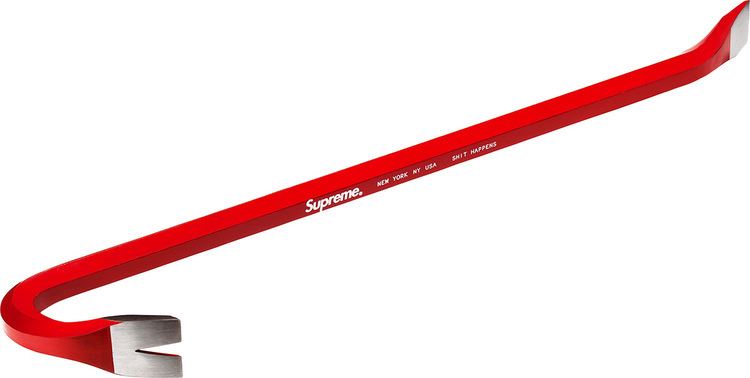 | ||
Crowbar tool
A crowbar, also called a wrecking bar, pry bar or prybar, pinch-bar, or occasionally a prise bar or prisebar, and more informally or known to non-American nations such as Britain and Australia as a jimmy (also called jimmy bar or jemmy), gooseneck, or pig foot, is a tool consisting of a metal bar with a single curved end and flattened points, often with a small fissure on one or both ends for removing nails. In Britain, Ireland, New Zealand, and Australia, due to the influence of American media "crowbar" may occasionally be used loosely for this tool, but it is still mainly used to mean a larger straighter tool, its original English meaning (see digging bar). The term jammy or jimmy most often refers to the tool when used for burglary.
Contents

It is used as a lever either to force apart two objects or to remove nails. Crowbars are commonly used to open nailed wooden crates, remove nails, or pry apart boards. Crowbars can be used as any of the three lever classes but the curved end is usually used as a first-class lever, and the flat end as a second class lever. In mining, crowbars are used to break and remove rock, but not as much in modern mining.

Materials and construction
Normally made of medium-carbon steel, they can alternatively be made from titanium, which has the advantages of being lighter and nonmagnetic.
The least expensive, most common crowbars are forged from hexagonal or sometimes cylindrical stock. More expensive designs may be forged with an I-shaped cross-section shaft.
Etymology
The accepted etymology identifies the first component of the word crowbar with the bird-name "crow", perhaps due to the crowbar's resemblance to the feet or beak of a crow. The first attestation of the word is circa 1400. They also were called simply crows, or iron crows; William Shakespeare used the term iron crow in many places, including his play Romeo and Juliet, Act 5, Scene 2: "Get me an iron crow and bring it straight unto my cell."
In Daniel Defoe's 1719 novel Robinson Crusoe, the protagonist uses crowbars as pickaxes but refers to these tools as iron crows: "As for the pickaxe, I made use of the iron crows, which were proper enough, though heavy."
